Diabetes In The Elderly: A Growing Concern
The fastest-growing segment of the American population consists of individuals aged 60 and older. In 1994, one out of every eight individuals in our country was over 65 years old. By the year 2020, it is estimated that one out of every six people will be over 65 years old and Managing Diabetes in the Elderly is Important.
Approximately 20 percent of people aged 65 years or older have diabetes, and just about half of those people don’t even know that they have it! Another 20 percent of people over the age of 65 have impaired glucose tolerance. That adds up to a full 40 percent of our senior citizens with some degree of glucose intolerance! That statistic has not matched the world over. Some societies report diabetes prevalence as low as 3.5 percent in their senior populations. Advancing age is a risk factor for developing diabetes, but having 65 candles on the cake doesn’t make diabetes an inevitability. Prevention and treatment strategies boil down to accessing health care and implementing diabetes self-care.
Health Care
Many individuals have had diabetes for several years before finding out about it. That’s why it’s so important to have a thorough exam at the time of diagnosis.
Initial visit should include, but is not limited to:
- Complete physical exam.
- Hemoglobin A1c
- A dilated eye exam by an ophthalmologist.
- A urine microalbumin to assess kidney health.
- A complete foot exam to assess for nerve damage and circulatory problems.
- Assessment for the presence or risk of heart disease (heart disease is the most common disease present in senior citizens).
- A referral to a registered dietitian for meal planning.
- A visit with a nurse educator to teach blood glucose monitoring.
Diabetes tune-up visits should be scheduled as necessary to achieve glycemic goals. Other diabetes education visits, and labs should be repeated as needed, or as indicated by ADA standards of practice.
Diabetes in the elderly is often undertreated, which is a real disservice. Diabetes should not be allowed to tarnish the golden years. Uncontrolled diabetes may lead to many problems including:
- Fatigue and lethargy
- Increased frequency of urination
– which can cause incontinence.
– which can interrupt sleep patterns
– which can lead to dehydration
– which can cause mineral deficiencies because certain minerals are lost in the urine (particularly zinc, chromium, and magnesium). - Blurred vision
- Impotence
- Poor wound healing
- Decreased ability to fight infection
- Increased platelets aggregation which increases the risk of heart attack and stroke
- Confusion and hallucinations, which if not promptly treated can lead to coma and death.
- Hyperosmolar, hyperglycemic, nonketotic syndrome
Self Care: Nutritional Considerations
Barriers to Balanced Nutrition
As age increases, the sense of taste and smell may diminish. Food may lose some of its appeal. Some prescription medications may cause digestive complaints or cause taste changes. Besides appetite changes, social situations can contribute to malnutrition. The loss of a beloved mate can result in depression and a dwindling appetite. Cooking and eating for one just isn’t the same as sharing mealtimes together. Isolation is associated with poor eating habits, and living on a fixed income can dictate the types and amounts of foods available.
In some cases, advancing age brings physical limitations that impact the ability to shop for, prepare, and eat meals. Barriers include visual problems, arthritis, ill-fitting dentures, changes in strength and balance, and decreased mobility.
As a result, many seniors are nutritionally compromised.
Eating Tips For Seniors
- Eat 5-6 small meals per day.
- Distribute carbohydrate foods evenly throughout the day to improve glycemia.
- Choose fruit instead of fruit juice. Juice tends to exacerbate hyperglycemia.
- Eat fresh fruit, or buy fruits canned in their own juices or in water, not in syrup.
- Eat adequate amounts of protein.
- Frozen vegetables can be used as needed, and they keep well.
- Share meals with friends or family whenever possible.
- Eat a variety of foods.
- Try new recipes.
- Make extra and freeze leftovers for future use.
- Unprocessed potatoes, rice, dried beans, and pastas are cheaper than prepared items.
- Use foods with stronger flavors and seasonings if the sense of taste has diminished.
- Focus on using herbs and spices instead of added salt.
- Make foods look attractive.
- Set a fancy table.
- Increase fiber to treat and prevent constipation.
- Drink plenty of liquids.
- Keep active; it stimulates the appetite.
Senior Nutrition Alert
Calorie requirements decrease somewhat as the years pass by, but vitamin and mineral requirements don’t significantly decrease. It’s important to make every bite count. It’s important to choose nutritious and fortified foods and limit junk foods.
As the body ages, the sense of thirst diminishes. Thirst is not a reliable indicator of hydration and many senior citizens end up dehydrated. Uncontrolled diabetes further increases the risk for dehydration. Adequate fluid intake is crucially important. Like all of us, seniors should aim for at least 8 cups of fluid per day, and drink more on hot days. (Alcoholic beverages don’t count toward fluid goals.)
If a well-balanced diet is consistently obtained, vitamin supplements are not necessary. If a vitamin supplement is indicated, choose one that provides 100 percent of the RDA (recommended daily allowance). The vitamin supplements are in addition to, not in place of, healthful foods.
Nutrients that are most frequently inadequate in the senior population include:
- Vitamin B12: decreased stomach acid is to blame for poor B12 absorption. The RDA for seniors is 2.4 micrograms. Vitamin B12 is abundant in animal products (milk, meats, fish, eggs).
- Calcium: The RDA for seniors is 1200 milligrams per day. Calcium is best found in dairy products such as milk, yogurt, and cheese. Calcium fortified soymilk and tofu are available.
- Vitamin D: Lack of exposure to the sun, and omitting fortified milk can lead to poor vitamin D levels. The RDA for seniors is 10-15 micrograms per day.
- Vitamin C: Fruits and vegetables are the best sources of vitamin C. The RDA for female seniors is 75 milligrams; males 90 milligrams.
- Zinc: Best found in meat, liver, seafood, eggs, and whole grains, the RDA for adult females is 8 milligrams, and males 11 milligrams.
- Magnesium: Most abundant in nuts and seeds, legumes, and whole grains, the RDA for elderly females is 320 milligrams; males 420 milligrams.
- Folate: Found in leafy vegetables, legumes, and some fruits, the RDA is 400 micrograms per day.
Caution: Exceeding the RDA is not recommended because high intake of certain vitamins and minerals can cause toxicity.






